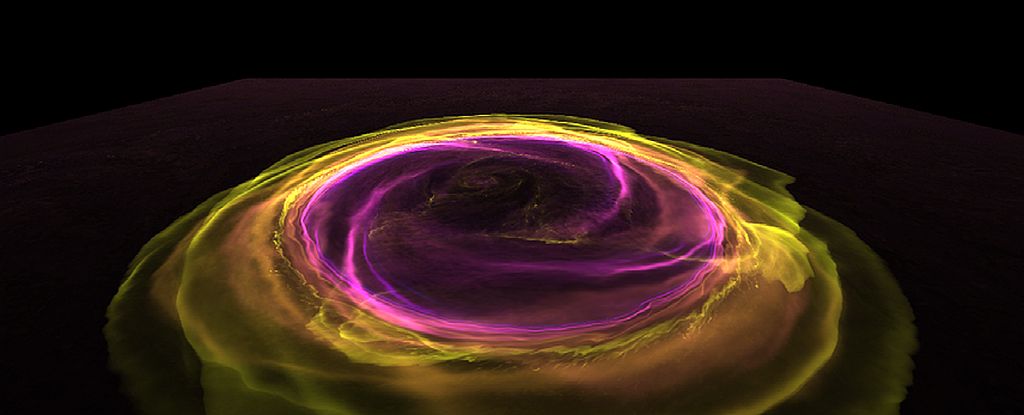Scientists Ignited a Thermonuclear Explosion Inside a Supercomputer
PHYSICS
25 March 2024
ByMICHELLE STARR

An image of the flame spreading from the simulation. (Zingale et al., ApJ, 2024)
Computer simulations are giving us new insight into the riotous behavior of cannibal neutron stars.
When a neutron star slurps up material from a close binary companion, the unstable thermonuclear burning of that accumulated material can produce a wild explosion that sends X-radiation bursting across the Universe.
An image of the flame spreading from the simulation. (Zingale et al., ApJ, 2024)
Computer simulations are giving us new insight into the riotous behavior of cannibal neutron stars.
When a neutron star slurps up material from a close binary companion, the unstable thermonuclear burning of that accumulated material can produce a wild explosion that sends X-radiation bursting across the Universe.
How exactly these powerful eruptions evolve and spread across the surface of a neutron star is something of a mystery. But by trying to replicate the observed X-ray flares using simulations, scientists are learning more about their ins and outs – as well as the ultra-dense neutron stars that produce them.
"We can see these events happen in finer detail with a simulation," says computational astrophysicist Michael Zingale of the State University of New York at Stony Brook. "One of the things we want to do is understand the properties of the neutron star because we want to understand how matter behaves at the extreme densities you would find in a neutron star."
More:
https://www.sciencealert.com/scientists-ignited-a-thermonuclear-explosion-inside-a-supercomputer

